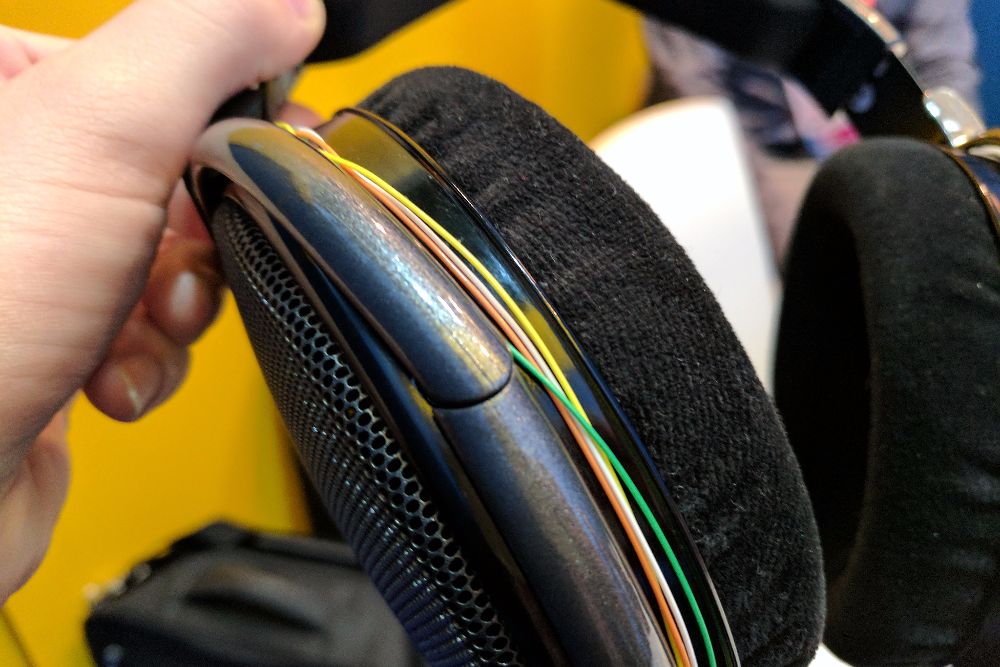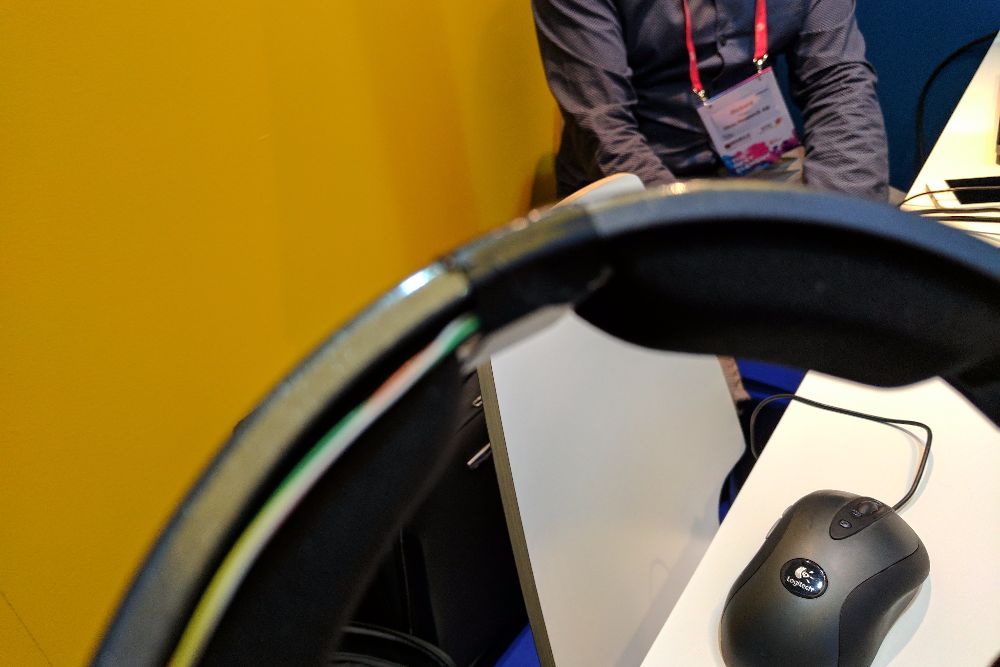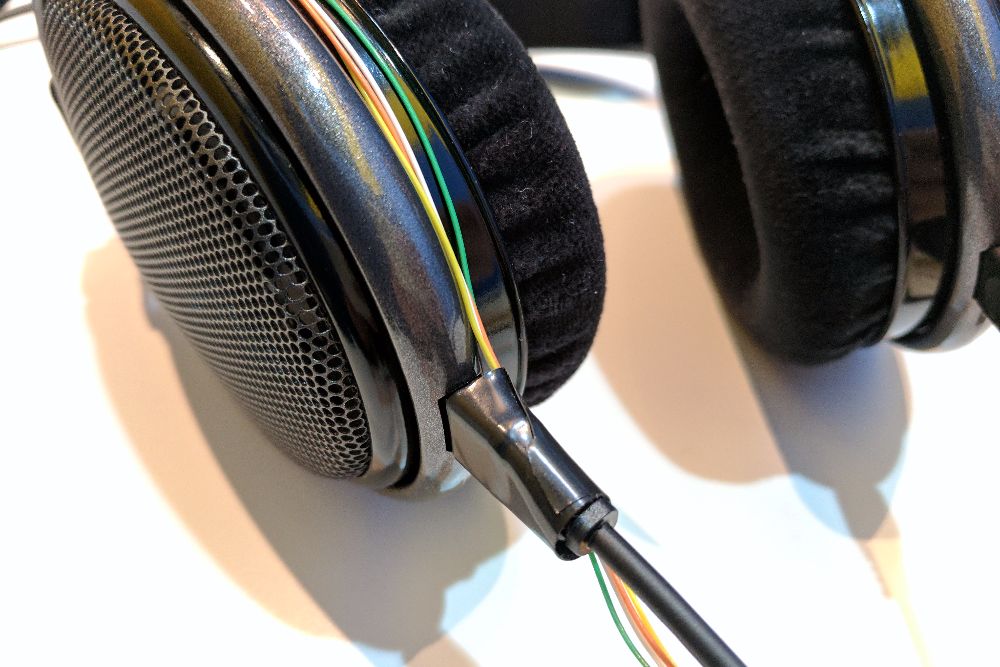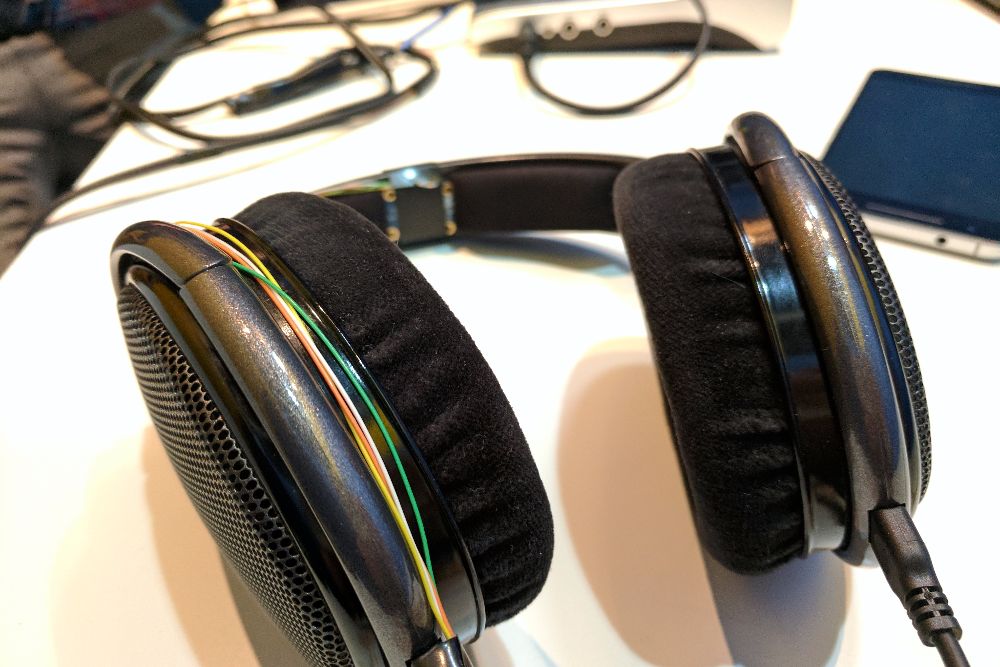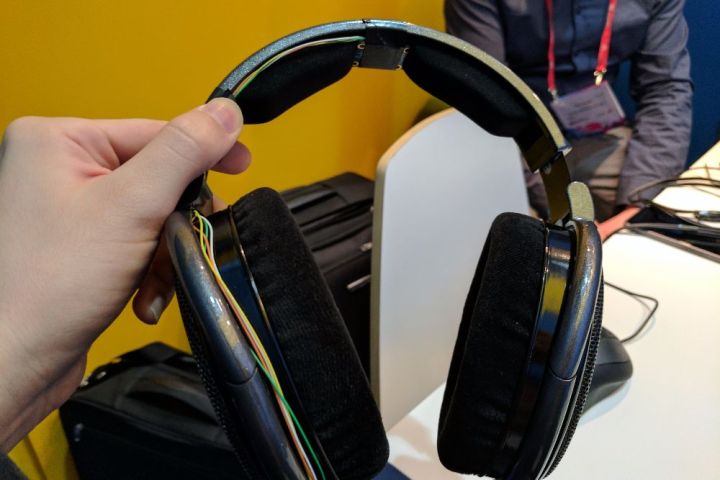
In a sequestered room off the bustling Mobile World Congress convention center floor in Barcelona, Dirac walked us through the firm’s first audio software product: Dynamic 3D Audio. “It enables transparent sound reproduction,” Dirac Research CEO Dr. Mathias Johansson said. “For example, if in a VR environment a helicopter is hovering 10 yards in front of me, regardless of which way I turn my head, that helicopter [stays] perfectly fixed.”
We put on a pair of Sennheiser open-ear headphones that’d been jury-rigged with a bundle of sensors. Once they were resting comfortable on our ears, a Dirac rep flipped a switch and the demo began.
Dynamic 3D Audio is startlingly realistic. Imagine playing your favorite album and hearing the instruments in front of you, as if on stage. Or picture a virtual surround sound system that simulates a real one: When you point your head in the direction of one “speaker,” it becomes louder, clearer, and more distinctive than the rest.
We heard a firework whiz from the left-back corner of the tiny demo room to the front-right. And we nearly jumped at the sound of a booming voice behind us.
Dynamic 3D Audio’s secret sauce, so to speak, is head-related transfer functions, or HRTFs. As a company spokesperson explained it, they’re a function of how the human ear perceives a particular sound from a fixed point in space — like how a subwoofer sounds from across the room. Dirac Research’s Dynamic 3D Audio platform considers height, cranial proportions, and ear dimensions in each individualized HRTF, ensuring the most accurate reproduction of sound possible.
Those calculations feed a reverberation engine and a head-tracker — the aformentioned bundle of wires.
Dyrac’s second demo, Panorama Sound, was perhaps more impressive than Dynamic 3D Audio. A rep handed us a Huawei Nexus 6P smartphone outfitted with modified software, and had us compare between “Panorama Sound”-enabled stereo and standard stereo.
The difference was revelatory.
With the effect enabled and the Nexus 6P held about six inches from our ears — the sweet spot for Panorama Sound, a Dirac rep told us — it was just like wearing a pair of high-end headphones, but without the headphones. We heard the strings of a guitar plucked to the far right of us. And during a clip of space disaster movie Gravity, a NASA transmission to an astronaut sounded as though coming from a source inches away.
Panorama Sound is made especially convincing thanks to patented algorithms that fine-tune the audio’s frequency, impulse response, and phase. The end result is a perfectly coordinated speakers that deliver an ultra-wide sound stage, rich bass, and unbelievable crispness.
All the more impressive, it works with virtually any audio array that consists of more than two speakers. A Dirac audio rep said that regardless of the two speaker’s proximity to the listener, Panorama can tune them to sound like a perfectly balanced pair of headphones.
Panorama Sound, like Dynamic 3D Audio, remains a demo for now. But Dirac told us it’s in talks with a giant handset maker about potential implementations of Panorama Sound. And it’s partnering with a headphone maker to build Dynamic 3D Audio’s sensors into a Hi-Fi audio product.
Dirac won’t commit to a firm launch date for either product, but here’s hoping they make it to market.

